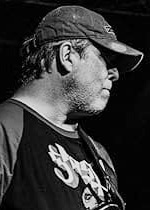
Added By: Administrator
Last Updated: Administrator
Saint Leibowitz and the Wild Horse Woman
| Author: | Walter M. Miller, Jr. Terry Bisson |
| Publisher: |
Bantam Dell Publishing Group, 1997 Orbit, 1997 |
| Series: | Leibowitz: Book 2 |
|
1. A Canticle for Leibowitz |
|
| Book Type: | Novel |
| Genre: | Science-Fiction |
| Sub-Genre Tags: | Apocalyptic/Post-Apocalyptic Theological |
| Awards: | |
| Lists: | |
| Links: | |
| Avg Member Rating: |
|
|
|
|
Synopsis
Forty years after the classic A Canticle for Leibowitz, Walter Miller returns to a world struggling to transcend a terrifying legacy of darkness, as one man undertakes an odyssey of adventure and discovery that promises to alter the destiny of humankind . . . .
Isolated in Leibowitz Abbey, Brother Blacktooth St. George suffers a crisis of faith, torn between his vows and his Nomad upbringing, between the Holy Virgin and visions of the Wild Horse Woman of his people. At the brink of disgrace and expulsion from his order, the young monk is championed by a powerful cardinal who has plans for him. Blacktooth sets out on a journey across a landscape still scarred by the long-ago Flame Deluge, a land divided by nature, politics, and war. He will find horrors and wonders, sins of the flesh . . . and love. As he encounters and reencounters a beautiful but forbidden mutant named Ædrea, he begins to wonder: is a she-devil, the Holy Mother, or the Wild Horse Woman herself?
Excerpt
"Listen, my son, to your master's precepts, and incline the ear of your heart."
--The First Sentence of The Rule.
"Whoever you are, therefore, who are hastening to the heavenly homeland, fulfill with the help of Christ this minimum Rule which we have written for beginners; and then at length under God's protection, you will attain to the loftier heights of doctrine and virtue which we have mentioned above."
--The Last Sentence of The Rule.
Between these two lines, written about 529 A.D. in a dark age, is Saint Benedict's homely prescription for a way of monastic life that has prevailed even in the shadow of the Magna Civitas.
As he sat shivering in the gloomy corridor outside the meeting hall and waited for the tribunal to finish deciding his punishment, Brother Blacktooth St. George, A.O.L., remembered the time his boss uncle had taken him to see the Wild Horse Woman at a Plains Nomad tribal ceremony, and how Deacon ("Half-Breed") Brownpony, who was on a diplomatic mission to the Plains at the time, had tried to exorcise her priests with holy water and drive her spirit from the council lodge. There had been a riot, and an assault on the person of the young deacon, not yet a cardinal, whose shaman ("witch doctor") attackers had been summarily executed by the newly baptized Nomad sharif. Blacktooth was seven at the time, and had not seen the Woman then, but his boss uncle insisted that she had been there in the smoke of the fire until the trouble began. He believed his boss uncle, as he might not have believed his father. Later, before he ran away from home, he had seen her twice, once by day riding bareback and naked along the crest of a ridge, and once by dim firelight when she prowled as the Night Hag through the darkness outside the settlement enclosure. He definitely remembered seeing her. Now his ties to Christianity demanded that he remember them as childish hallucinations. One of the less plausible accusations against him was that he had confused her with the Mother of God.
The tribunal was taking its time. There was no clock in the hall, but at least an hour had passed since Blacktooth had testified in his own defense and been excused from the meeting hall, which was really the abbey's refectory. He tried not to speculate about the cause of the delay, or the meaning of the fact that pure chance had cast that deacon, now Cardinal ("Red Deacon") Brownpony, in the role of amicus curiae at the hearing. The cardinal had come to the monastery from the Holy See only a week ago, and it was well known, but most certainly not announced, that his purpose in being here was to discuss with the Abbot Cardinal Jarad the papal election (the third in four years) which would be called soon after the present Pope finished dying.
Blacktooth could not decide whether the eminent Half-Breed's participation in the trial was favorable or unfavorable to his cause. As he remembered the night of the exorcism, he also remembered that in those days Brownpony had not been friendly to the Plains Nomads, either the wild or the tamed. The cardinal had been raised by sisters in the territory conquered by Texark. It had been told to him that his mother, a Nomad, had been raped by a Texark cavalryman, then had abandoned her baby to the sisters. But in recent years, the cardinal had learned to speak the Nomad tongue, and spent much time and effort forging an alliance between the wild people of the Plains and the exiled papacy in its Rocky Mountain refuge at Valana. Blacktooth himself was of pure Nomad blood, although his late parents had been displaced to the farming settlements. His mother owned no mares, and thus he had no status whatever among the wild tribes. His ethnic background had been no handicap during his life as a monk; the brethren were tolerant to a fault, except in matters of faith. But in the so-called civilized world outside, being a Nomad would be hazardous unless he lived on the Plains.
He heard raised voices from the refectory, but could not make out words. One way or another, it was all over for him but the final break, and that was proving to be the hardest thing of all.
A few paces from the bench where he was supposed to wait was a shallow alcove in the corridor wall, and within it stood a statue of Saint Leibowitz. Brother Blacktooth left the bench and went there to pray, thus disobeying the last command given to him: Sit there, stay there. Breaking his vow of obedience was getting to be a habit. Even a dog will sit and stay, his devil reminded him.
Sancte Isaac Eduarde, ora pro me!
The kneeling rail was too close to the image for him to look up at the saint's face, so he prayed to the saint's bare feet, which stood on a pile of fagots. Anyway, by now he knew the wrinkled old countenance by heart.
He remembered when he first came to the abbey, the abbot of that time, Dom Gido Graneden, had already ordered the statue removed from his office, its traditional place of repose, to the corridor here where it now stood. Graneden's predecessor had committed the sacrilege of having the fine old wood carving painted in "living color," and Graneden, who loved it in its original condition, could neither bear to look at it, with its painted simper and impossibly upturned irises, nor put up with the smell and noise of having its restoration done in situ. Blacktooth had never seen the full paint job, for upon his arrival the head and shoulders of a man of wood emerged from what appeared to be the chest of a plaster saint. A small area at a time was being treated with a phosphate compound concocted by Brothers Pharmacist and Janitor. As soon as the paint began to blister, they painstakingly scraped it clean, trying to avoid any abrasion of the wood. The process was very slow, and he had lived a year at the abbey before the restoration was complete; by that time, a filing cabinet occupied its space in the abbot's office, so here it still stood.
The restoration was less than complete even now, at least in the sight of those who remembered its original condition. Occasionally Brother Carpenter stopped to frown disapprovingly at it, then to work on the creases around the eyes with a dental pick, or caress between the fingers with fine sandpaper. He worried about what the paint remover might have done to the wood, so he frequently rubbed it with oil and lovingly polished it. The carving had been done nearly six centuries ago by a sculptor named Fingo, to whom the Beatus Leibowitz--not yet canonized--had appeared in a vision. A close resemblance between the statue and a death mask which Fingo had never seen was used as an argument for his canonization, because it seemed to confirm the reality of Fingo's vision.
Saint Leibowitz was Blacktooth's favorite saint, after the Holy Virgin, but now it was time to go. He crossed himself, arose, and returned doglike to the bench to "sit and stay." No one had seen him at prayer except his devil, who called him a hypocrite.
Blacktooth remembered clearly the first time he had asked to be released from his final vows as a monk of the Order of Saint Leibowitz. Many things had happened that year. It was the year the news came that his mother had died. It was also the year that the Abbot Jarad had received the red hat from the Pope in Valana, and the year Filpeo Harq had been crowned as the seventh Hannegan of Texark by his uncle Urion, the archbishop of that imperial city. More to the point, perhaps, it was the third year of Blacktooth's work (assigned to him by Dom Jarad himself) of translating all seven volumes of the Venerable Boedullus's Liber Originum, that scholarly but highly speculative attempt to reconstruct from the evidence of later events a plausible history of the darkest of all centuries, the twenty-first--of translating it from the old monastic author's quaint Neo-Latin into the most improbable of languages, Brother Blacktooth's own native tongue, the Grasshopper dialect of Plains Nomadic, for which not even a suitable phonetic alphabet existed prior to the conquests (3174 and 3175 A.D.) of Hannegan II in what had once been called Texas.
Several times Blacktooth had asked to be relieved of this task before he asked what he really dreaded, to be released from his vows, but Dom Jarad found his attitude peculiarly stubborn, obtuse, and ungrateful. The abbot had conceived of a small Nomadic library he wanted created as a donation of high culture from the monastic Memorabilia of Christian civilization to the benighted tribes still wandering the northern Plains, migrant herdsmen who would one day be persuaded into literacy by formerly edible missionaries, already busy among them and no longer considered edible under the Treaty of the Sacred Mare between the hordes and the adjacent agrarian states. As the literacy rate among the free tribes of the Grasshopper and Wilddog Hordes who ranged with their long-haired cattle north of the Nady Ann River was still less than five percent, the usefulness of such a library was a thing only dimly foreseen, even by the Lord Abbot, until Brother Blacktooth, in his initial eagerness to please his master before the work began, explained to Dom Jarad that the three major dialects of Nomadic differed less to the reader than to the listener, and that by means of a hybrid orthography and the avoidance of special tribal idioms, the translation could be made understandable even to a literate ex-Nomad subject of Hannegan VI in the South, where the Jackrabbit dialect was still spoken in the shanties, the fields, and the stables, while the Ol'zark...
Copyright © 1997 by Walter M. Miller, Jr.
Copyright © 1997 by Terry Bisson
Reviews
Images
No alternate cover images currently exist for this novel.



















 Full Details
Full Details






